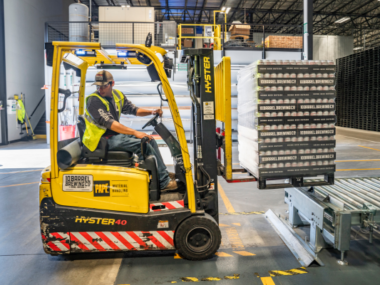The objective of Canada’s immigration rules is to enable the entry of proficient farm labourers to fulfil the nation’s agricultural requirements. This policy’s core component—the Farm Worker Visa program—makes Canada a popular destination for farm labourers across the globe. If you’re thinking about recruiting foreign workers under the farm worker visa programs, this article will walk you through the steps and requirements. Our legal staff is always here to help you with your business requirements. To find out more about obtaining work permits for your foreign agricultural workers, schedule a consultation.
Apply Now: Farm Worker in Canada 2024
A unique kind of work permit created especially to help foreign people who are interested in working on Canadian farms is the farm worker visa. With the help of this visa, people can work on Canadian farms for a predetermined amount of time, allowing them to obtain useful expertise in the country’s agricultural industry.
This visa offers several advantages, chief among them the possibility of obtaining permanent residency in Canada. This is a result of the government of Canada’s recognition of the value of the agriculture industry and the initiatives it has put in place to entice foreign labourers to settle down permanently. Therefore, those who are employed in the agricultural industry and exhibit a strong commitment to Canada may be qualified to apply for permanent residence through various immigration programs.
The Seasonal Agricultural Worker Program (SAWP) and the Agricultural Stream of the Temporary Foreign Worker Program (TFWP) are the two main immigration programs in Canada that Canadian agricultural firms can use to hire foreign workers for their farming operations.
Program for Seasonal Agricultural Workers (SAWP)
Employers can hire foreign workers for seasonal agricultural labour from select participating countries through a dedicated method called the Seasonal Agricultural Worker Program. For a strictly seasonal role, the employees must have a verified job offer.
To make sure there are no Canadian workers available to fill the position, the employer must first submit a Labour Market Impact Assessment (LMIA). The employee receives a formal job offer following receipt of a positive LMIA. After that, if all immigration and visa requirements are satisfied and the terms of the employment contract align with Canadian norms, the worker can apply for a work permit.
Eligibility
Anguilla, Antigua and Barbuda, Barbados, Dominica, Grenada, Jamaica, Montserrat, St. Kitts and Nevis, St. Lucia, St. Vincent and the Grenadines, Trinidad and Tobago, and Mexico are among the nations that are SAWP participants.
Have an offer of employment for seasonal agricultural work.
Employees are required to abide by immigration and visa laws.
The terms specified in the employment contract must be adhered to by both employers and employees.
Procedure
- A Labour Market Impact Assessment (LMIA) is submitted by a company.
- An offer of employment is made by the employer following a positive LMIA.
- A work permit is requested by the employee.
Working for Different Employers
Foreign labourers may be required to work on certain farms in Canada under the SAWP. A foreign employee does not, however, require a different work permit from each company. It is imperative to remember that an employee who is employed abroad cannot be requested to work for a different company without their permission.
For other agricultural labourers (not covered by the SAWP), the work permit will be employer-specific, meaning you can only work for the company listed on it. You will need to apply for a new work permit if you want to work for any employers that are not included in your current one.
Processing Times for SAWP
When a foreign worker files a complete application with Canadian authorities, the SAWP processing period starts. As of October 2023, the SAWP takes about 86 days to process.
Agricultural Stream of the Temporary Foreign Worker Program (TFWP)
All nationals are eligible to apply for the Agricultural Steam, which permits firms to engage foreign labour for non-seasonal agricultural jobs. The first stage is for the employer to obtain a positive LMIA, which attests to the fact that Canadian workers are not available for the desired position.
The potential foreign worker receives a job offer after obtaining the LMIA and has the option to apply for a work permit. Strict rules that prioritize worker rights, safety, and general work permit conditions must be met by both businesses and employees. With the help of this initiative, foreign labourers will have an easy method to lawfully engage in Canada’s agriculture industry.
Eligibility
- Accepting workers from any nation.
- The position must be in an agricultural industry that qualifies.
- Employees must comply with standard work permit criteria.
- Employers must adhere to program-specific standards to protect the safety and rights of their employees.
To be eligible for the Agricultural Stream, Canadian firms need to meet two main requirements:
Production in Particular Sectors of Commodities: The output needs to fit within specific commodities sectors.
A wide range of goods is included in it, including cattle, dairy, duck, horse, mink, poultry, sheep, and swine, as well as fruits, vegetables, flowers, grains, oil seeds, maple syrup, sod, and nursery-grown trees, including Christmas trees.
Primary Agriculture Activities on Farm: The job offer’s connected activities must have a direct bearing on primary agriculture practised on farms. This guarantees that the roles are genuinely agricultural and are performed within the boundaries of a farm, nursery, or greenhouse.
Procedure
- Companies must receive a favorable LMIA.
- Employers extend employment offers to overseas labourers.
- The foreign employee submits a work permit application.
Duration of Employment under the Agricultural Stream
- In their Agricultural Stream LMIA application, employers may ask for a maximum 2-year employment period.
- Employers may request a maximum 3-year employment term for high-paying positions as of April 4, 2022. The length of time must fit the employer’s legitimate demands for employment.
- The employer’s legitimate employment needs will determine the maximum two-year employment duration for low-wage positions.
The Process of Applying for a Farm Worker Visa in Canada
There are various steps involved in obtaining an agricultural worker visa in Canada. Here’s a thorough rundown to help you navigate each phase successfully:
1. Evaluation of the Labor Market’s Impact (LMIA)
The process starts when the Canadian employer gets Employment and Social Development Canada (ESDC) to issue a positive LMIA. This important phase confirms that there is a real need for a foreign worker and that no Canadian person is qualified for the position. The stringent LMIA procedure guarantees that hiring a foreign worker is necessary while defending the interests of the Canadian labour market.
2. Submitting an application
The path for the foreign worker to apply for a work permit is cleared with a positive LMIA. The application procedure necessitates the careful submission of numerous required papers. Of them, the positive LMIA is a crucial prerequisite that provides a strong basis for the application. Furthermore, the applicant’s eligibility must be accurately reflected in the documents they provide to the IRCC, and they must be complete.
3. Health Assessment
Some applicants might need to go through a medical examination, according on their situation and the IRCC’s standards. This phase is crucial to make whether the candidate is suitable to work in the agricultural industry, which frequently entails physically demanding activities, and does not represent a medical risk to Canadians.
4. Approval of Visa
The application advances toward acceptance upon the filing and evaluation of all relevant paperwork as well as the conclusion of all necessary processes, including the medical examination. To verify that all requirements are satisfied, IRCC does an extensive review. The farm worker visa is granted if the application complies with all standards and makes it through the review procedure.
General Farm Worker Visa Requirements
You need to fulfil these basic prerequisites to be qualified for a Farm Worker Visa in Canada. Among them are:
- A legitimate employment offer with a favourable LMIA from a Canadian firm.
evidence of pertinent farming or agricultural activity experience. - No criminal history (but you may need a police certificate).
medical assessment (if relevant). - Evidence of intention to depart Canada upon expiration of visa or permit.
Frequently Asked Questions
How can I get a farm work visa in Canada?
Obtaining a farm work visa involves several steps:
- Labour Market Impact Assessment (LMIA): Your Canadian employer must receive a positive LMIA from Employment and Social Development Canada (ESDC).
- Work Permit Application: After the LMIA approval, you can apply for a work permit from the IRCC, submitting the necessary documents, including the positive LMIA.
- Medical Examination: Some applicants might be required to undergo medical exams, depending on their circumstances.
- Visa Approval: Upon a successful review of your application and fulfilment of all requirements, IRCC will issue your farm worker visa.
How long can a farm worker stay in Canada?
- The duration a farm worker can stay in Canada typically depends on the validity of their work permit, which is often aligned with the terms of the employment contract. Generally, a work permit for agricultural workers might be issued for up to 24 months. Extensions could be possible, but they are subject to eligibility, employer needs, and approval from authorities.
Do farm workers need IELTS in Canada?
- Language requirements such as IELTS scores depend on the specific immigration or visa program through which a farm worker is applying. For temporary foreign worker programs, language proficiency tests like IELTS might not always be necessary. However, if a farm worker aims for permanent residency through pathways like the Agri-Food Immigration Pilot or certain Provincial Nominee Programs (PNPs), meeting language proficiency requirements, possibly through tests like IELTS, might be essential.
How can an employer sponsor a farm worker in Canada?
Sponsoring a farm worker in Canada involves a structured process where the employer plays a crucial role. Here’s a simplified guide:
- Labour Market Impact Assessment (LMIA): Begin by applying for an LMIA from Employment and Social Development Canada (ESDC). This assessment verifies a genuine need for a foreign farm worker and that no Canadian worker is available for the position.
- Job Offer: Once you obtain a positive LMIA, you can extend a formal job offer to the foreign worker. The job offer should be detailed, outlining roles, responsibilities, and compensation.
- Work Permit Application Support: Assist the foreign worker in applying for a work permit. Provide them with the necessary documents, including the positive LMIA and the detailed job offer.
- Collaboration and Communication: Maintain open lines of communication with prospective farm workers, ensuring that they have all the necessary information and support required to navigate the visa application process effectively.
- Preparation for Arrival: Prepare for the worker’s arrival by ensuring that suitable accommodations are available and that you comply with health and safety regulations.






